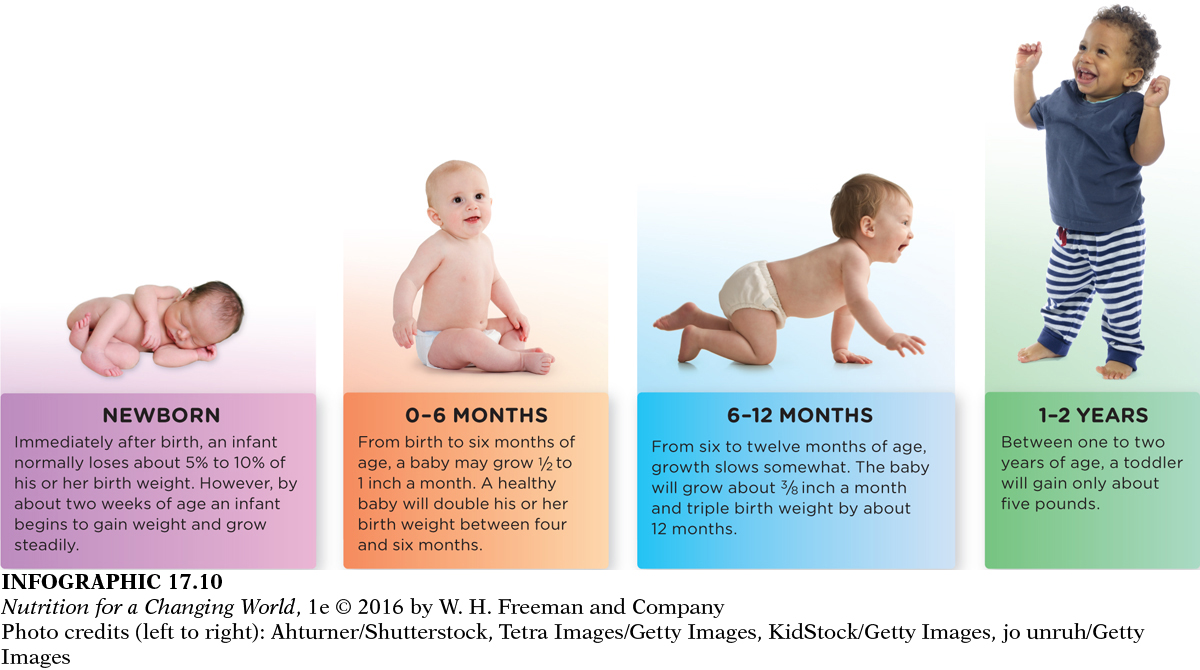NUTRITION FOR THE GROWING CHILD
Babies don’t get all of their nutrients through breast milk alone. Parents are advised to supplement their breastfed babies with 400 IU of vitamin D each day starting from the first few days of life. Breastfed babies of vegan or vitamin B12-deficient mothers may also require vitamin B12 supplements. All newborns are also typically given an injection of vitamin K in the hospital after birth. Babies have very little vitamin K, an important blood-
Infants vary considerably in terms of their growth, development, nutritional needs, and feeding patterns. During the first two to six weeks of their lives, they primarily feed, sleep, and grow. By late infancy, newborn reflexes have gone away and a baby has mastered certain physical tasks that allow him to progress from a diet of exclusive breast milk or formula to foods with an increasingly wide variety of flavors and textures. The ways parents feed their babies not only nourish them, but also help to promote motor development and establish key feeding skills, healthy habits, and strong family relationships.
407
Babies grow at different rates because of differing genetic factors and prenatal history, but growth is also an important indicator of adequate nutrition. Inadequate intake of calories or essential nutrients can significantly affect mental and physical development, particularly during the critical periods from birth to one year. Infants should double their birth weight by four to six months and typically triple it by their first birthday. They also grow in length by approximately 50% in their first year. (INFOGRAPHIC 17.10)

Babies who are fed on demand typically consume enough and grow appropriately, and they can eat quite a lot—
Introduction of solid food
Solid foods—

According to the American Academy of Pediatrics, a baby may be ready to eat solid foods when she is able to hold up her head and sit in a high chair or feeding seat with good head control. The tongue thrusting reflex that allows a baby to suck efficiently should be diminished enough so that the infant can move food from the spoon to the back of his mouth for swallowing. Typically infants double their birth weight at around four months and weigh 13 pounds or more and may, at that point, be big enough to try solid foods. Finally, babies may indicate a readiness for solid foods when they show an interest in what the family is eating, and can signify when they are satiated, for instance by turning their head when they are full or by refusing to open their mouth. Babies who are fed solid foods before they are ready may be at risk for becoming overweight, developing food allergies, and suffering upset stomachs. (See Chapter 18 for information about food allergies). (INFOGRAPHIC 17.11)
408

Iron needs in infancy
Following a healthy pregnancy, most—